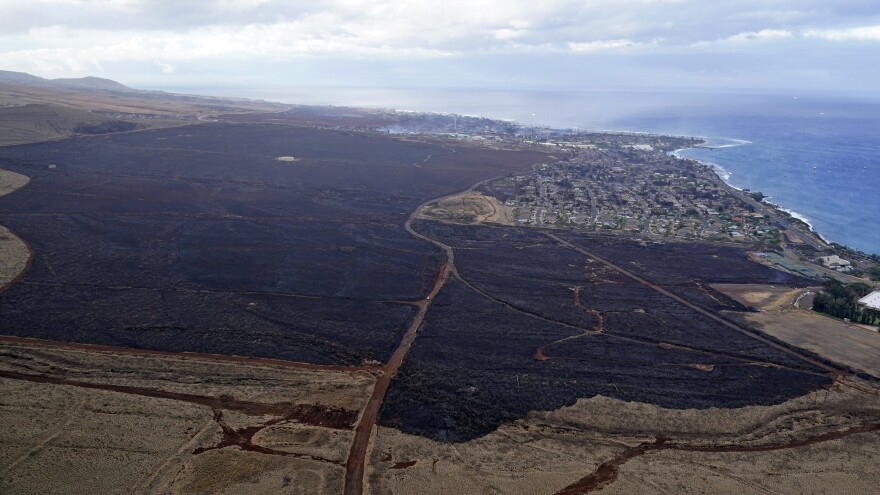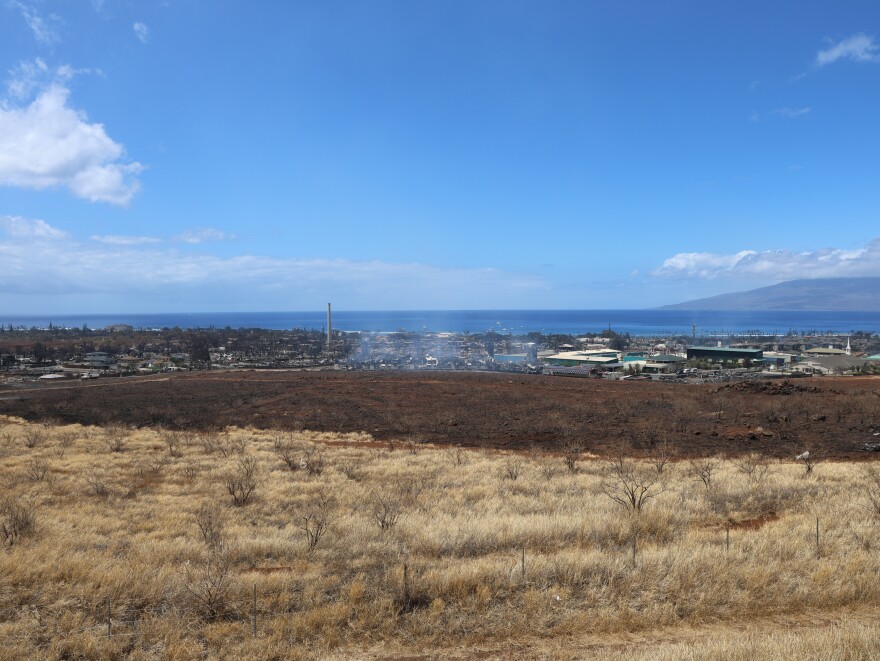Overlooking West Maui’s historic town are relics of the plantation era. Fields that used to grow sugar cane are now dried out and overgrown with invasive grass.
Officials have found that several factors contributed to Maui’s deadly wildfires, including dry conditions and intense winds. However, some say non-native grass played a key role in fueling one of the deadliest wildfires in U.S. history.
For years, environmentalists have been calling for vegetation management as invasive plants spread in urban areas.
The problem has grown as wildfires worsen with more prolonged droughts and high winds caused by frequent storms, according to Christy Martin, a program director at the Coordinating Group on Alien Pest Species.
“We have an invasive fuel supply problem, and we have way too much opportunity for a spark to take hold,” Martin said, adding a need for long-term solutions in managing invasive species.

About 25% of Hawaiʻi’s land is covered with non-native grass and shrubs, according to USDA researchers.
Non-native plants like buffelgrass, guinea grass and molasses grass were brought to Hawaiʻi from Africa to feed livestock or used as ornamentals.
As Lāhainā’s sugar cane industry ended in the late 20th century, thousands of acres of unmanaged land made it home for invasive species, according to Lissa Strohecker, the outreach and education specialist at the Maui Invasive Species Committee.
“We’ve got large areas that are filled with these fire-proof grasses, and all it takes is one spark,” she said.
Invasive grasses already resprouting
It’s been over a month since the wildfires leveled Lāhainā and killed at least 115 people. While buildings are in ruins, plant experts say invasive grass is already resprouting.
“They can either regenerate from the roots or quickly from seed,” Strohecker said. “So it might burn off the top part, but they’ll be one of the initial things to return after the fire has gone.”
Strohecker said molasses grass is commonly seen in people’s yards, adding that the plant contains a lot of oils, so it burns quickly. She added that buffelgrass and guinea grass are typically found in open fields and can grow up to at least four feet tall.

These fire-adapted grasses are mostly found in low-level areas. However, researchers at the University of Hawaiʻi found that climate change increases non-native grass invasion in higher elevations.
Elliot Parsons, a Pacific Regional Invasive Species and Climate Change Management Network specialist, said it’s challenging to manage invasive grasses due to their adaptability.
franny
He said there are numerous hypotheses on why invasive species become successful in their new environment, including escaping their natural predators from their old ecosystem.
“It adds to the complexity and difficulty of dealing with these grasses because some of them may have been kept in check in their home range by species that ate them or managed their leaf tissues,” Parsons said.
“When they get to this new environment, they don’t necessarily have those checks in place, so they can grow quickly and spread rapidly, and they’re that much harder to deal with," he continued.
Preventing wide-spread growth
Parsons said some ideas for managing vegetation would be cattle grazing, mowing, weed whacking or building fire breaks to prevent the spread of flames.
According to Franny Brewer of the Big Island Invasive Species Committee, each plant will need to be handled differently. She said it would be impossible to eradicate certain invasive grasses because they’re widespread, adding that the only option is long-term management.
She said one solution could be replanting the area with native or non-invasive trees and bushes.
“That’s probably the most labor intensive, so it’s got the biggest price tag upfront,” Brewer said.

Elizabeth Pickett, a co-executive director of the Hawaiʻi Wildfire Management Organization, said wildfires are complex.
In Hawaiʻi, less than 1% of fires are caused by lava and lightning and about 99% are caused by humans, according to Pickett.
She noted that experts consider grasslands the driver behind wildfires because they can carry out flames.
“We’re also looking at it as something that can be managed,” Pickett said. “So it is that it’s invasive, but any kind of grass and any kind of vegetation that’s going to dry out during our dry season are going to be flammable. It’s a matter of active management.”




